
All categories
Featured selections
Trade Assurance
Buyer Central
Help Center
Get the app
Become a supplier

(23204 products available)
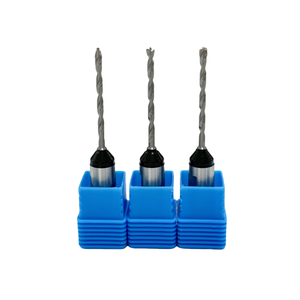




















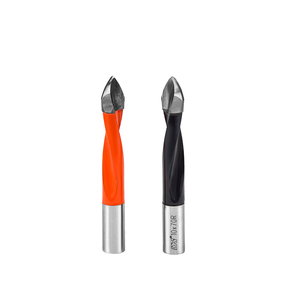












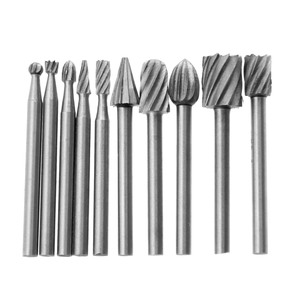

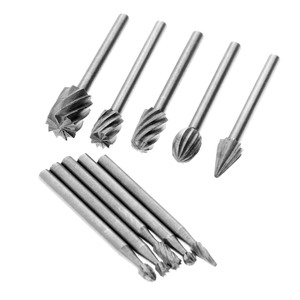
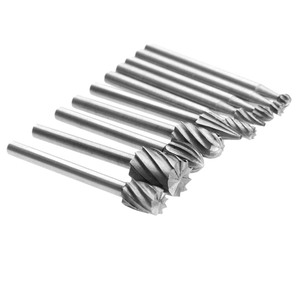











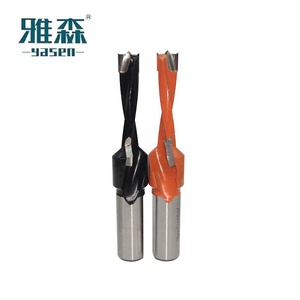

Solid carbide drills cutting wood are available in different types that offer distinctive advantages and usages.
Spiral drill bits
This is the most common type of solid carbide drill cutting wood. Spiral drill bits have flutes that twist in a spiral shape towards the tip of the bit. The tip of the bit is sharp and machined with cutting edges that allow drilling into wood at an angle. Solid carbide spiral bits are suitable for drill presses and milling machines. They are widely used in the woodworking industry to create precise cuts. The flutes of the spiral bits are designed to efficiently remove sawdust and wood chips from the carving.
Ball-nose end mill bits
These bits have a rounded tip. They are used for 3D carving in wood and provide a smooth finish. In comparison to tapered end mills, ball-nose bits are ideal for making rounded shapes rather than sharp corners or edges. Because of this reason, these bits are the best option for cutting wood in sculptures and other complex designs that require curved surfaces.
Tapered fringe bits
Tapered fringe bits have sloped edges that taper towards the tip. These bits can be used for detailed work in wood, such as carving soft contours and shallow pockets. The angle of the taper will determine the thickness of the carved mold. A smaller tapered bit offers high precision for fine work, and a larger one is suitable for carving woody molds quickly.
Compression bits
These bits feature opposing flutes, meaning the top flute is designed to cut the wood surface on the top layer, and the bottom flute is meant to cut the bottom layer of the material. This characteristic makes the flutes ideal for cutting plywood and laminated materials, where tear-out on wooden surfaces is undesirable. Instead of tearing out the edges of the cut on wood, these bits compress wood to ensure smooth finished edges after the carving.
V-bits
V-bits are designed to engrave precise grooves and lettering in wood, these bits have a pointed tip and a well-defined V shape. The angle of the tip will determine the width of the groove. V-bits are usually used in variable projects, including signs, decorative overlays, and intricate inlays, where accurate and clear carving is important.
The quality and durability of solid carbide drill cutting wood are of pivotal importance in the structure of reliable and efficient tools. Solid carbide is well known for its hardness and wear resistance. Therefore, it is the material of choice for drill bits used in carving and machining operations.
High Cutting Edge Retention
Unlike other materials, solid carbide has a high cutting edge retention. This means that a solid carbide bit will maintain its sharp edge for a long time. It reduces the frequency of required sharpenings and replacements. This is particularly advantageous for woodworking because worn-out bits can cause rough cuts and increase tear-out.
Heat and Friction Resistance
Woodworking can produce a lot of friction because of the mechanical workpiece being rolled. It also can produce a lot of friction due to the nature of the wood material being cut. Solid carbide bits can withstand this friction and accumulate a lot of heat without the risk of compromising its structural integrity. It means that these bits can be used for long periods in intensive carving projects without warping, chipping, or bending.
Straightness and Balance
Quality solid carbide drill bits are manufactured within strict tolerance levels to ensure straightness and balance. Thus, these bits produce accurate cuts in wood without vibrations or wobbling. It has relevance to both wood's aesthetics and integrity because any distortion during carving can lead to uneven surfaces, splintering, or cracking.
Corrosion and Wear Resistance
Solid carbide’s superior resistance to wear extends the life of the bit far beyond that of high-speed steel or carbide-tipped bits. It also exhibits high resistance to rust and corrosion. Even with exposure to moisture in wood or environmental conditions, solid carbide bits maintain their performance. This makes them ideal for use in shops and outdoor projects.
Precision Engineering
Quality solid carbide bits are usually manufactured using advanced techniques, such as electrical discharge machining (EDM). This gives them precisely shaped flutes and cutting edges for optimum performance. It is particularly relevant in woodworking, where even slight variations in the bit's shape can affect the smoothness and accuracy of cuts.
Solid carbide drills are well suited for a number of commercial applications in different woodworking industries.
Customized Wood Products
Carbide drills are commonly used in the manufacture of specialized woodworking products, such as furniture, cabinetry, moldings, etc. These drills offer high precision and are well suited for producing custom patterns, inlays, and decorative elements on wood.
Composite and Engineered Woods
Carbide drills apply to other modern woodworking materials, such as plywood, MDF, and other particleboard compositions. These materials, which have synthetic adhesives, can otherwise damage inferior quality drills. Therefore, drills have high durability and cutting edge retention to make them suitable for such composite drilling.
High-Volume Production
In high-volume production environments, such as manufacturing plants or large-scale cabinet-making operations, there is a demand for tools with the longest possible lifespan. Solid carbide drills meet this requirement as they can withstand frequent usage. Also, there is less chance of the bit wearing down and causing slower production speeds.
Precision Engineering
In industries where precision is of high importance, such as aerospace or automotive applications, solid carbide drills produce fine and detailed components, such as control surfaces, interior panels, etc. These drills ensure accurate cuts in dense or layered wood.
Tool and Die Making
Woodworking industries making molds, patterns, or prototypes for casting, shaping, or imprinting metal or fiberglass in the future usually have to use carbide drills. These are the ideal choice in such scenarios. Their sharpness and durability transfer desired precision onto the final product.
The Sign and Display Industry
Carbide drills are used in the sign-making industry, which requires drilled inserts, channels, or inlays in wooden signs. These drills help create customized and detailed signs for businesses.
Integration with CNC Systems
Solid carbide drills are used with CNC machines cutting automated and precise wood. Woodworking businesses wanting to improve drudgery and accuracy usually invest in carbide drills suitable for their CNC systems.
To get a solid carbide drill cutting the wood, buyers need to consider several factors. Below is the rundown of those factors.
Material
Solid carbide is ideal for end mills that operate at fast rpm because it retains sharp edges for a long time. Cobalt and carbide tipped are also suitable for such end mills. The former is harder than high-speed steel, making it suitable for use on abrasive materials, while the latter offers good rigidity and is highly heat resistant.
Woodworking drill bits
Buyers should go for bits that are specifically designed for carving wood. Such bits have a narrow flute and a pointed tip. Plywood bits should have a non-icing surface that prevents wood from clogging the flutes. Besides, buyers should avoid carbide tipped bits sold as woodworking drill bits. These are meant for softer materials.
Flute length and number
The number of flutes affects how far the drill bit extends from the collet. Woodworking bits should have a small number of flutes and flute lengths that extend a small distance from the collet. This is because wood is a soft material that breaks easily. To reduce its breakage, buyers should look for end mills with few flutes. Additionally, bits with short flutes are less likely to vibrate when working on thin materials.
Coating
Several coatings are added on flute shafts to increase the efficacy and durability of drill bits. For instance, titanium coatings are commonly added on bits to reduce friction and thermal wear. Additionally, they increase the bit's resistance to chemicals. A similar coating is the black oxide, which reduces friction and improves the bit's surface thermoplastic. Besides, some bits feature multiple coatings, such as diamond, which increase their hardness and strength.
Bit shank
Drill bits are available with two main types of shanks: tapered and straight. Straight shanks are designed for standard drills, while tapered shanks are for specialized drills. Buyers with standard drills should get bits that have straight shanks, while those with specialized drills should get bits with tapered shanks.
Before operating a solid carbide drill, several precautions should be undertaken:
Wood cutting requires a specific set of drilling characteristics that distinguish these drills from others. A key characteristic is a small number of flutes. It is because flutes are designed to pull material away from the drilled area, and drills for dense materials like metal with high suction power often have many flutes to ensure complete removal. However, this characteristic in wood drills only causes splinters and tearing.
Another key characteristic is the shape of the drill bit. Wood drills are designed with sharper angles and edges to easily slice through pliable wood fibers. On the other hand, drills meant for hard materials have flatter angles that improve their usability for heavy industrial projects but decrease their suitability for carving wood.
Lastly, wood drills feature greater space between the flutes, which prevents them from clogging when cutting elusive materials.
Ball-nose end mill bits are suitable for 3D carving. They are perfect for making rounded shapes and offer a smooth finish. Compared to tapered end mills, these bits are ideal for cutting wood into sculptures and other complex forms requiring curved surfaces. This versatility makes them appropriate for different woodworking projects.